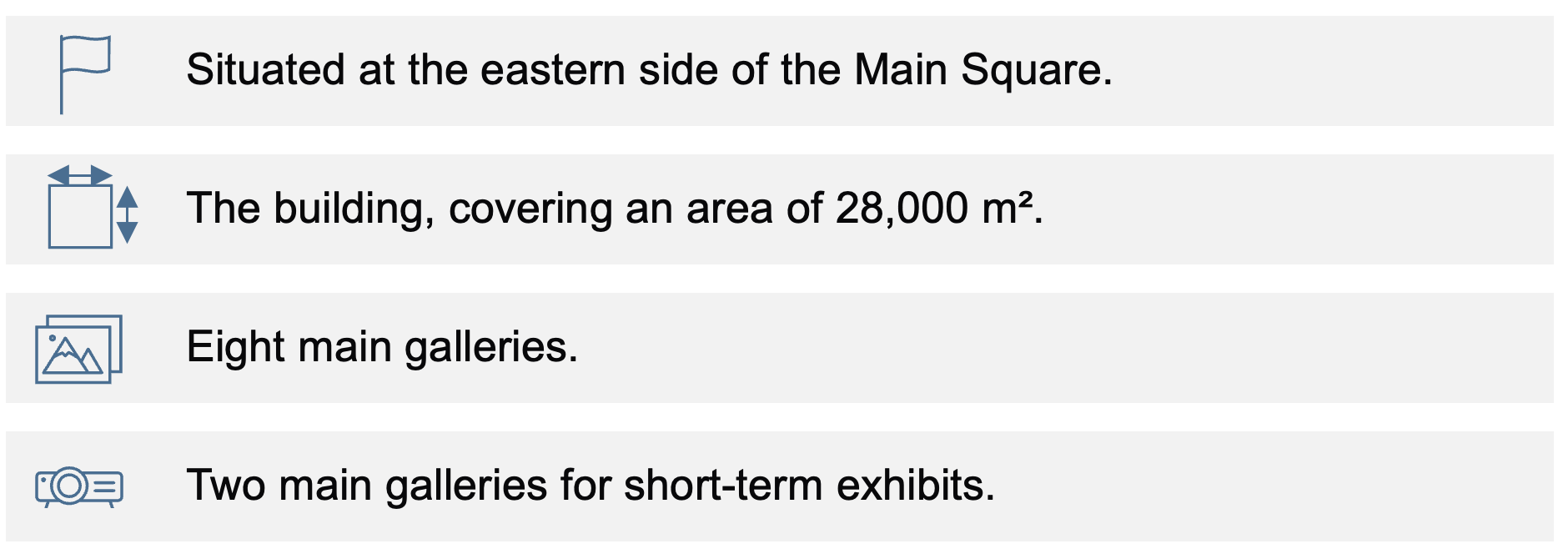The 61st ISOCARP World Planning Congress will take place at a purpose-built venue within the King Abdulaziz Historical Center in Riyadh - a site that beautifully blends history, culture, and innovation. The Congress venue will be constructed exclusively for this Congress, utilising the Center's expansive open spaces to create a fully tailored environment for plenary sessions, roundtables, special sessions, workshops, exhibitions, and networking activities. Surrounded by iconic landmarks such as the National Museum, Al-Murabba Palace, and Al-Watan Park, the venue will immerse participants in the cultural and historical heart of Riyadh. The venue design will integrate seamlessly with the surrounding landscape, offering modern facilities, accessibility via the National Museum Metro Station, and sustainable features inspired by the Center's green and pedestrian-friendly design. The King Abdulaziz Historical Center - a symbol of the Kingdom's transformation - will thus serve as inspiration for dialogue on the future of cities.
Explore the Area Around the Venue
King Abdulaziz Historical Center
The King Abdulaziz Historical Center stands as one of the most iconic landmarks in Riyadh. It seamlessly blends cultural, historical, and recreational elements within a cohesive urban landscape and serves as a vibrant civic destination. Its layout provides an ideal setting for hosting large-scale international events such as the World Planning Congress, with open spaces that can be adapted for sessions, exhibitions, and ceremonies. For more information, please visit: King Abdulaziz Historical Center Project. The center has modern, multipurpose facilities that transform it into a cultural oasis, where visitors can enjoy entertainment and make use of its amenities. The design is exceptionally environmentally friendly, featuring vast green spaces where various trees and shrubs have been planted to reduce pollution and high temperatures, filter the air, and benefit the neighboring districts.
 | Key Components
|  | Location
|
The National Museum
The National Museum was designed after studying various renowned museums worldwide to ensure it would become a national cultural landmark. The museum's approach to portraying human history is derived from the Islamic perspective on the Creation of Man. A unique method is employed to present the sequence of historical developments. Each of the main galleries represents a specific period of time, beginning with the creation of the universe and continuing up to the present era.
 | Touring the museum allows visitors to journey from the mysteries of the birth of the universe, through prehistoric times and ancient civilizations, to the early pre-Islamic (Jahiliyya) era. This is followed by the galleries on the advent of Prophet Muhammad, may the mercy and blessings of Allah be upon him, and the development of Islamic civilization, and then the Saudi States gallery. Finally, the tour concludes with the gallery dedicated to Hajj and the Two Holy Mosques. |
King Abdulaziz Darah
Located on the western side of the Center's main Maydan, the Darah (King Abdulaziz Foundation for Research and Archives) is one of the major components of the King Abdulaziz Historical Center. The 7,000 m² building housing the Darah was constructed on the site of King Abdulaziz's residential palace, with a total built area of 12,000 m². It has been reconstructed without altering the palace's fundamental features.
Antiquities and Museums Sector (Ministry of Tourism)
A new 3,000 m² headquarters for the Antiquities and Museums Sector was annexed to the National Museum. The building is functionally independent from the museum. The building has two floors: the first is for administration and research purposes, while the second is for rehabilitation and documentation work.
Al-Murabba' Palace
Al-Murabba' Palace is the most historically important building in the city center. In 1357H, the late King Abdulaziz ordered the construction of a complex of palaces on Al-Murabba' land to serve as his family's residential palace. The complex consisted of residential palaces, service buildings, and the Diwan of King Abdulaziz.
The land of Al-Murabba' Palace itself holds historical significance. The complex comprised the famous King Abdulaziz Diwan, King Abdulaziz Palace (currently Al-Darah), and a number of other buildings and archaeological sites. The RCRC has undertaken their restoration in accordance with internationally recognised standards.

